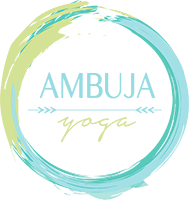Warrior Three Teaching Tutorial
Virabhadrasana III or warrior three in English is a strong posture that builds focus and concentration while strengthening the entire body. In this yoga teaching tutorial you will learn to teach warrior three confidently and effectively with these help helpful tips.
Warrior three has many benefits. Make sure to share the benefits of the posture when you teach warrior three. Sharing the benefits will help your students discover the purpose of the posture and the focus needed to execute it.
The posture builds strength throughout the backside of the body, especially in the ankles, calves, hamstrings, glutes, back and shoulders. It also tones and strengthens the abdomen, ignites our inner fire and improves our concentration and focus. Your students may even find they feel invigorated and energized after practicing warrior three. Sweet!
Warrior Three Alignment Tips
- Remember to start with the foundation of the posture. For warrior three the foundation is the foot of the standing leg.
- In virabhadrasana III the toes of the standing leg foot should be spread wide. Think of distributing weight evenly throughout the entire sole of the foot (all four corners).
- When standing in warrior three the extended leg is straight back from the hip and the extended leg stretches long.
- The foot of the extended leg is flexed and the toes point straight down toward floor the floor or the foot is pointed strongly.
- There is one long line from the heel of the extended leg out through crown of the head. Aside from the standing leg the body is parallel to the floor.
- Make sure that the hips are level with one another. It is very common for the hip of the extended leg to want to lift up.
- In warrior three the navel draws in and up to support the lower back (think mula bandha and uddiyana bandha).
- To bring more stability to the posture draw the lower ribs in toward one another instead of allowing them to flare out and the back to arch.
- Arms extended long overhead with biceps by ears.
- Use a focal point or drishti for your eyes.
Warrior Three Modifications
Finding balance in warrior three can be a challenge for many. For students struggling to find steadiness in virabhadrasana three here are three modifications to help them find their balance and build strength in the stabilizing muscles necessary for steadiness and ease. Yoga Journal provides a helpful article about Warrior Three for beginners and advanced practitioners alike.
- Bring a chair just beyond the top of your students yoga mat. Have the back of the chair facing your student. When the student comes into the posture they will hold onto the back of the chair with their hands. Overtime, increase the amount of time they hold the posture. Make sure to switch sides. If there is no chair available use the wall or a sturdy countertop.
- Another modification for warrior three is to offer two blocks that they can use underneath their fingertips. Place the blocks shoulder width distance at the top of your student’s mat. Have them use the blocks for balance as they find the alignment through the torso, hips and legs.
- Some students may need to stay upright in warrior three to work on balancing on one leg. Have students that need to remain upright stand in the center of their mat. As they inhale have them take the arms overhead. On their exhale have them extend one leg straight back behind them and keep the toes on the mat. When they feel steady they can begin to lift the back foot and lower the torso to parallel with the floor. These students may also benefit from using a chair, block or wall for stability for the upper body as well.
Warrior Three Variations
- One of my favorite warrior three variations is interlacing the fingers behind hips and drawing the palms of the hands toward one another.
- If students have tight shoulders or shoulder strain/pain teach warrior three with hands at heart center.
- Another arm variation for virabhadrasana three is airplane pose. In airplane pose the arms are extended back and out to the side with the palms turned down toward the floor.
Props for Warrior Three
- Use the wall for warrior three
- Press hands into the wall
- Press the foot of the extended leg against the wall
- Use blocks for strength and stability in virabhadrasana three
- Block(s) under hands for stability
- Block between the palms of the hands with arms extended overhead. Have students squeeze the palms of their hands into the block to strengthen arms, shoulders and upper back.
Preparatory Poses for Warrior 3
The following postures will help your students find stability, strength and ease in warrior three. Before you teach warrior three make sure to offer a mix of postures to bring both stability and mobility to the muscle groups and joints used in virabhadrasana.
- Table top pose/ Tiger pose (stability)
- Low Lunge (mobility in hip flexors)
- Ardha Hanumanasana/Half Splits (flexibility for the hamstrings)
- Locust (strengthens the back body)
- Crescent Lunge (strengthens the legs and tones the core)
- Pyramid Pose (opens the hamstrings)
- Warrior 1 (strengthens the legs)
- Tree Pose (balance and focus)
Vinyasa Yoga Sequencing to Teach Warrior Three | Four Fun Warrior Three Sequences
- Crescent lunge, warrior three, standing splits, forward fold
- Warrior 1 with hands bound behind hips to Warrior 3 hands still bound, release the bind and swing arms forward in Warrior three, return to warrior 1
- Warrior 1/Crescent Lunge to Warrior 3 to Garudasana/Eagle Pose, hinge from hips elbows to meet knees, lift two inches and come back to warrior 3
- Teach Warrior 3 to Dancer Pose to Warrior 3 to Standing Splits to Handstand to Standing Splits

 Ambuja Yoga
Ambuja Yoga 
